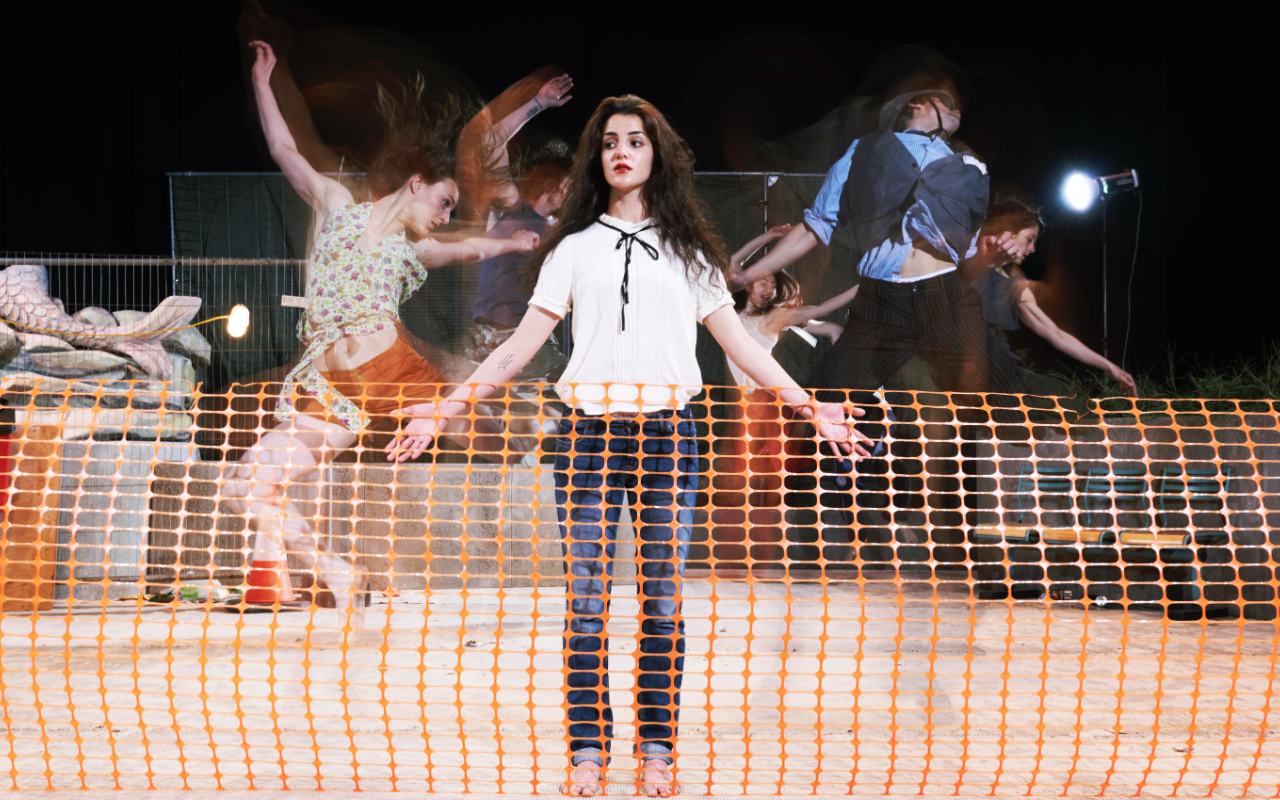
Jasmin Vardimon Company's Park, 2014
Photo: Ben Harries
Co-designing a sustainable future for arts and higher education collaboration
While collaboration between the cultural sector and universities has never been more fruitful, Suzie Leighton and Kayla Rose know there are still significant barriers to overcome.
A key part of the mission of the National Centre for Academic and Cultural Exchange (NCACE) is to develop the capacity for excellent collaboration and knowledge exchange between the arts, cultural and higher education sectors. But issues remains around a lack of mutual understanding, skills and capacity and appropriate processes. And many collaborative endeavours are not as embedded, resilient or impactful as they could be.
NCACE’s recent survey took a deep dive into the sector’s experiences and opinions on collaboration with higher education, and provided interesting insights into work of this nature. While a healthy 46% of organisations reported that they were leading their collaborations with the university sector, 62% reported that they were uncertain how to go about collaborating with a higher education institution (HEI), and nearly a quarter were unsure what collaborating with a university could offer them.
In addition, and unsurprisingly, a lack of finance and staff capacity to undertake such collaborations were also barriers. Research by NESTA and the Centre for Cultural Value on the impact of Covid suggests that available resources will be further reduced. So understanding and articulating the potential strategic benefits of collaboration to arts and cultural organisations, and valuing and rewarding their role in research and knowledge creation, is essential to making the case for the arts to invest in building these partnerships.
Difference in understanding the term ‘knowledge exchange’
To gain further insight into the skills and capacity required for such collaborations, Dr Kayla Rose undertook a rapid literature and evidence review to summarise the existing research. Her findings concluded that the underlying challenge is around exactly how to carry out knowledge exchange in a way that fits with both the disciplinary practices of arts, humanities and creative industries research, and the ways in which the arts and cultural sector operates within that space.
We know from practice that weight around co-design and collaborative activity is inherent in the arts and cultural sectors. We also know the need for mutually beneficial reciprocal relationships. However, the term ‘knowledge exchange’ itself creates a challenge. Across sources, there is the sense that universities do not always understand and champion the value of research from the arts and cultural sector. Instead, they can view knowledge exchange as a set of metrics that are more transactional, and mainly a one-way knowledge transfer rather than a two-way mutually beneficial process of knowledge exchange and creation.
As a result, the how is often hidden in, rather than missing from, the existing literature because of the different languages and priorities that exist across the university and arts and cultural sectors. As Professor Geoffrey Crossick and Dr Simon Moreton have noted, many of the knowledge exchange activities that occur in the arts and cultural sectors are often based on models designed specifically for other sectors – usually health, science and technology.
Further opportunities for building resilience
Partnerships in the arts and cultural sector are fundamentally relational. The challenge of getting universities and the sector on the same page in terms of defining collaboration is a work in progress. Researchers agree that much like deep friendships, partnerships between HEIs and the arts and cultural (and indeed, voluntary) sectors need defining and development via a process of co-creation. Long-term, sustainable and mutually beneficial partnerships need a deep commitment from both sides, but precisely what that commitment entails from both viewpoints is yet to be defined.
Overall, there is a clear recognition that there is a gap in skills and capacity-building (the ‘missing middle’), with a recommendation that there needs to be a strategic way of building greater resilience into projects and partnerships. As a result of this research, it is clear that further opportunities exist for NCACE to build substantially on existing literature and examples of best practice.
While knowledge exchange skills developed for collaboration with other sectors may not necessarily be fit-for-purpose for the arts and cultural sector, it is worth exploring how these may be adapted to suit their specific needs. The other side of this is the recognition that not all of these will work within the specific context of the arts and cultural sector, so it is essential that universities and arts and cultural sector partners participate in co-designing their approach to working together, sharing their expectations and approaches with an eye towards establishing a truly mutually beneficial collaboration.
Suzie Leighton is Co-Director at NCACE and TCCE.
Dr Kayla Rose is Educational Partnerships Manager at Bath Spa University.
Dr Kayla Rose’s full report will be published later in the autumn and will be available, along with details of NCACE events and activities on our website.
This article from National Centre for Academic and Cultural Exchange (NCACE) is one of a series of articles and case studies to shine a light on knowledge exchange and cultural partnerships between Higher Education and the arts and cultural sector.
Join the Discussion
You must be logged in to post a comment.